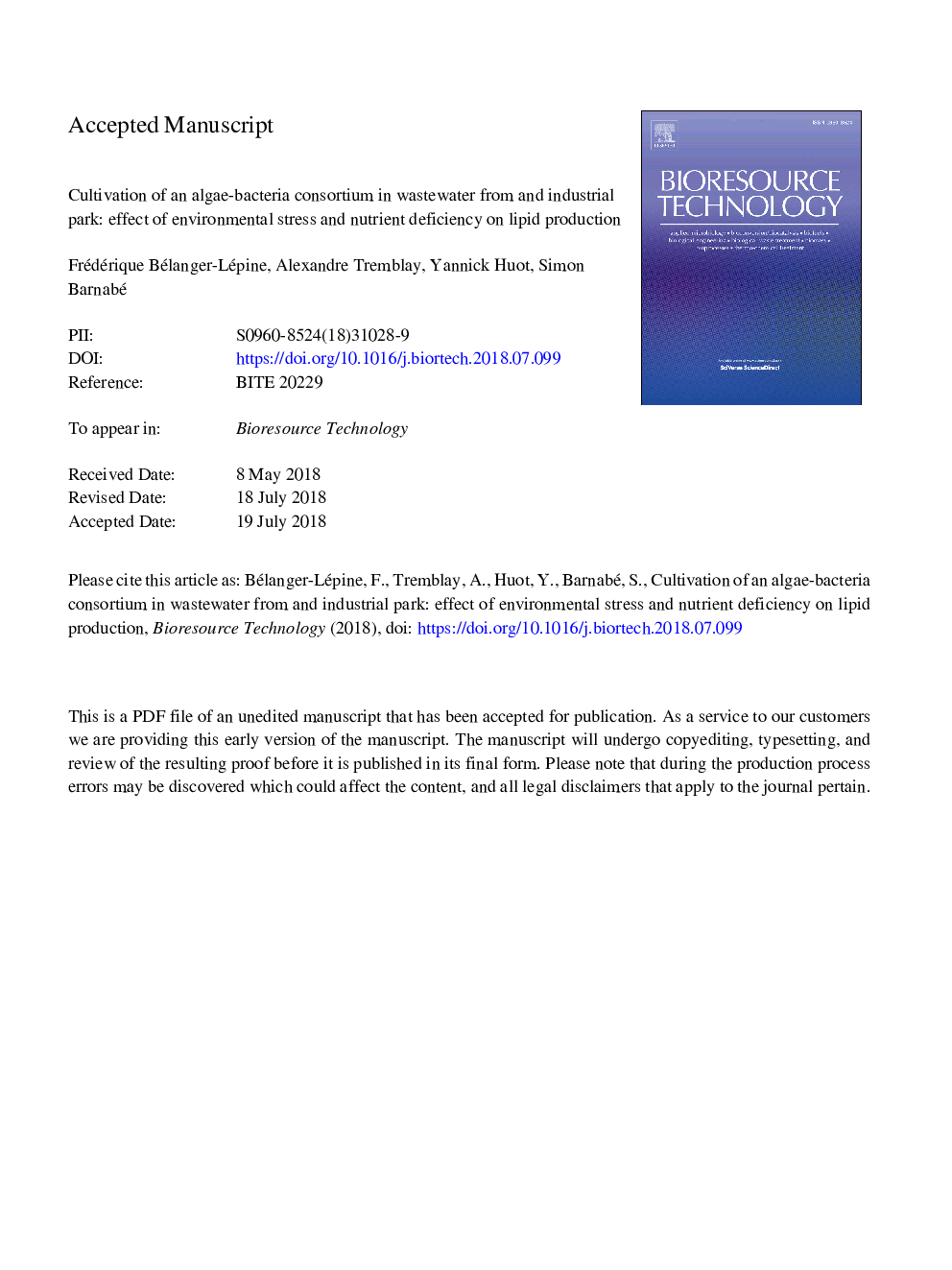| Article ID | Journal | Published Year | Pages | File Type |
|---|---|---|---|---|
| 7066187 | Bioresource Technology | 2018 | 37 Pages |
Abstract
Adoption of microalgae-sourced products depends on the economic feasibility. In the case of fatty acids, it is crucial to obtain high lipid yield, especially in the form of storage lipids (TAGs). However, the production of these lipids often comes into competition with the microalgae biomass, resulting in a decrease in growth. A microalgae culture integration project was conducted in an industrial park in Canada in order to cultivate microalgae from park's wastewaters and then obtain products from the biomass. Different deficiencies and stresses were tested to evaluate what condition allowed the induction of the highest lipids accumulation without compromising the growth of microalgae. The results showed that the medium controlled to pH 7.0 allowed reaching the largest amount of extracted lipids (28â¯Â±â¯4.3%). Companies involved in this project could be able to make significant savings by the reduced wastewater treatment costs and by not adding expensive nutrients in culture.
Related Topics
Physical Sciences and Engineering
Chemical Engineering
Process Chemistry and Technology
Authors
Frédérique Bélanger-Lépine, Alexandre Tremblay, Yannick Huot, Simon Barnabé,
